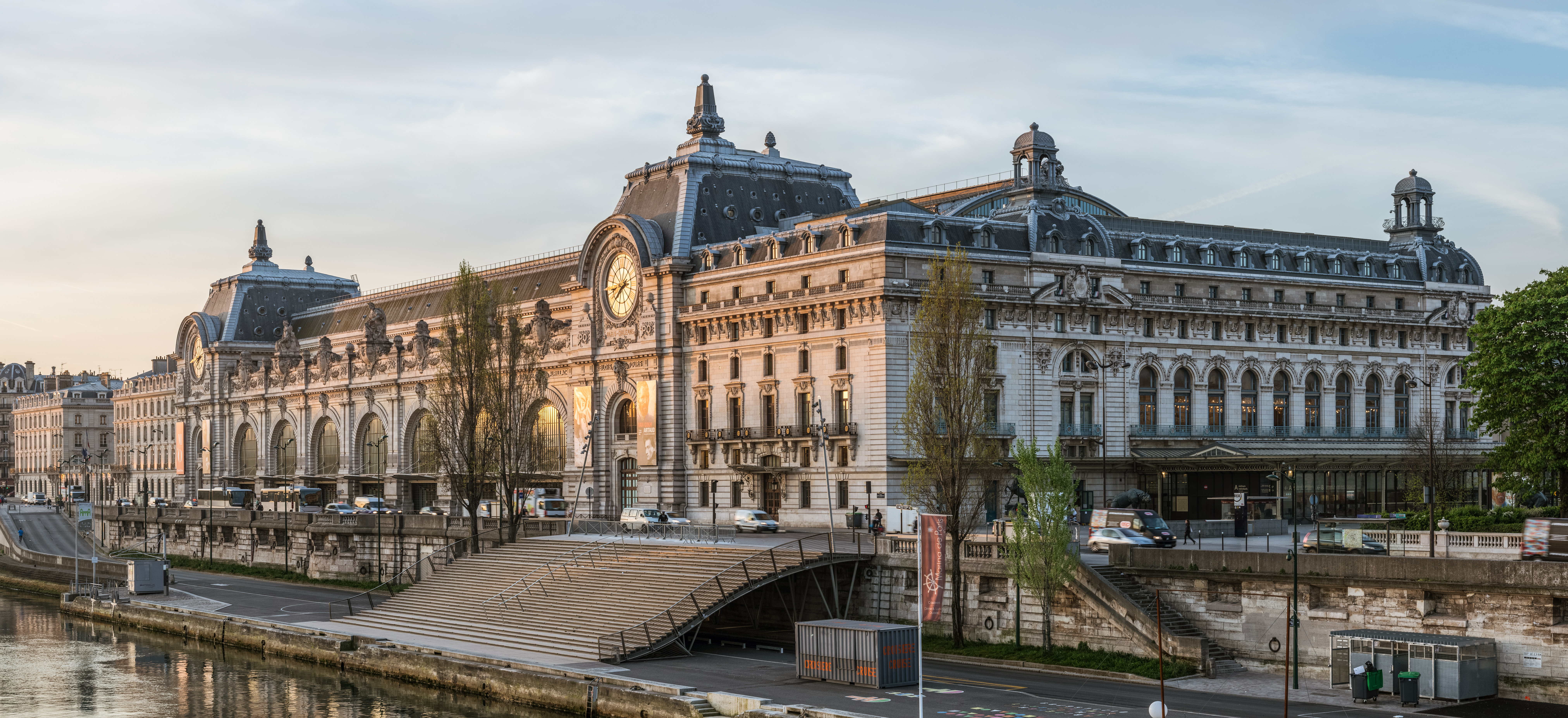Musée d’Orsay

Location
The Musée d’Orsay is located at 1 Rue de la Légion d’Honneur, in the 7th arrondissement of Paris, France. It is situated on the left bank of the Seine River, not far from the Louvre Museum.
Description of the Place
The Musée d’Orsay is renowned for its extensive collection of Impressionist and Post-Impressionist masterpieces. Housed in a former Beaux-Arts railway station, the museum’s architecture is as impressive as its collection. It offers a unique view into the art and culture of the late 19th and early 20th centuries.
History
Originally opened as a railway station, Gare d’Orsay, in 1900 for the Exposition Universelle, the building was converted into a museum in 1986. The transformation was led by architects Renaud Bardon and Jean-Paul Philippon. The museum’s collection focuses primarily on art from the period 1848 to 1914, which was not covered by other major Parisian museums.
Visiting Hours
The museum is typically open:
- Tuesday to Sunday: 9:30 AM to 6:00 PM.
- Closed: Mondays, January 1, May 1, and December 25.
The museum is closed on Mondays, but there are extended hours during certain exhibitions, so it’s a good idea to check their website for current opening times.
Significance
The Musée d’Orsay is significant for its collection of Impressionist and Post-Impressionist art, which includes works by famous artists such as Monet, Van Gogh, Cézanne, and Degas. It provides valuable insight into the artistic and cultural developments of the late 19th and early 20th centuries.
Ticket Prices
General admission prices are:
- Adults: Around 16 EUR.
- Reduced Rate: 13 EUR for visitors aged 18-25, and for disabled visitors.
- Free Admission: For EU citizens aged 18-25 on certain days and for children under 18.
Admission is also free on the first Sunday of each month.
Features of the Place
- Architecture: The museum’s building, originally a railway station, features a striking Beaux-Arts design with a grand glass roof and large clock faces.
- Collections: Highlights include masterpieces of Impressionism and Post-Impressionism, with works by Monet, Manet, Van Gogh, Renoir, and many others.
- Exhibitions: The museum frequently hosts temporary exhibitions, which are often focused on specific artists or themes.
Climate and Altitude
- Climate: Paris has an oceanic climate with mild winters and warm summers. Average temperatures range from about 5°C in winter to 25°C in summer.
- Altitude: The museum is located at approximately 35 meters (115 feet) above sea level.
How to Get There From
- From Charles de Gaulle Airport: Take the RER B train to “Châtelet-Les Halles,” then transfer to RER C to “Musée d’Orsay.”
- From Gare du Nord Station: Take Metro Line 5 to “Bastille,” then transfer to RER C to “Musée d’Orsay.”
What to Do
- Explore the Collection: Wander through the galleries to view masterpieces by Impressionist and Post-Impressionist artists.
- Visit the Clock: Admire the large clock on the museum’s facade, which provides a panoramic view of Paris from behind the glass.
- Enjoy the Café: Relax at the museum’s café, which offers a pleasant atmosphere and a chance to enjoy refreshments.
Most Characteristic Features
The Musée d’Orsay is known for its extensive collection of Impressionist and Post-Impressionist art, its stunning Beaux-Arts architecture, and its unique setting in a former railway station. The museum’s collection and setting provide a fascinating glimpse into a transformative period in art history.
Where to Stay
- Nearby Hotels:
- Hôtel d’Orsay: A boutique hotel offering elegant accommodations close to the museum.
- Le Relais Saint-Germain: A charming hotel in the Latin Quarter, a short distance from the Musée d’Orsay.
- Hotel Lutetia: A luxury hotel located in the Saint-Germain-des-Prés area, offering easy access to the museum.











